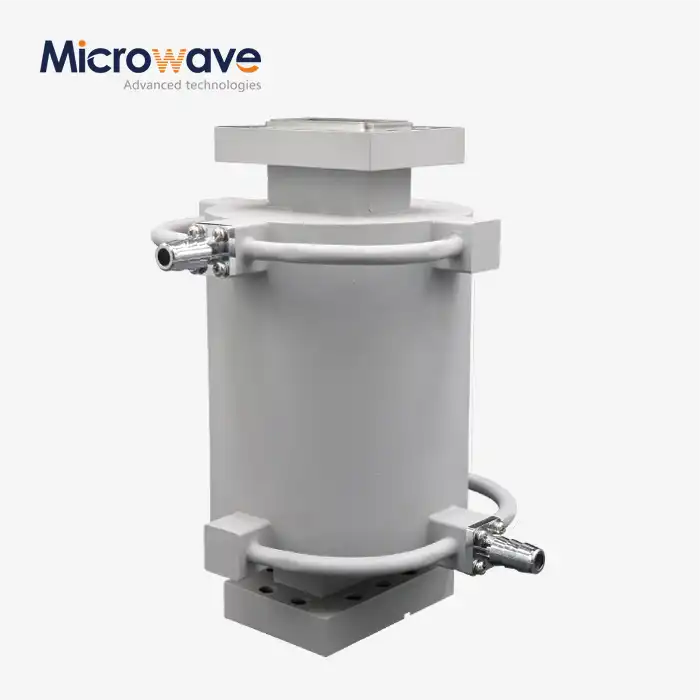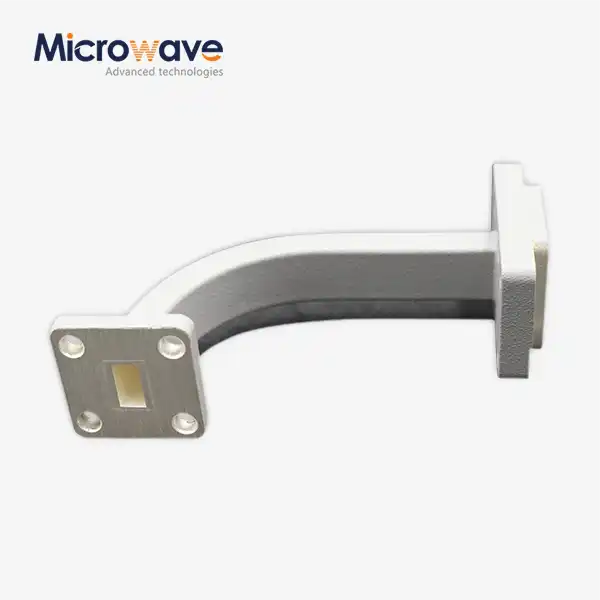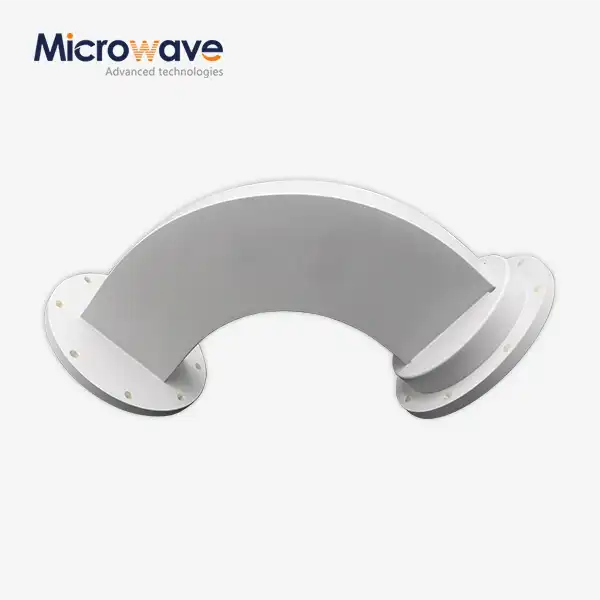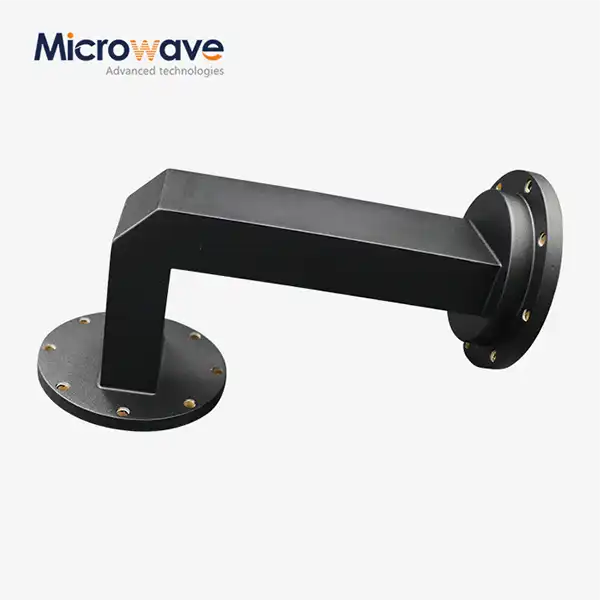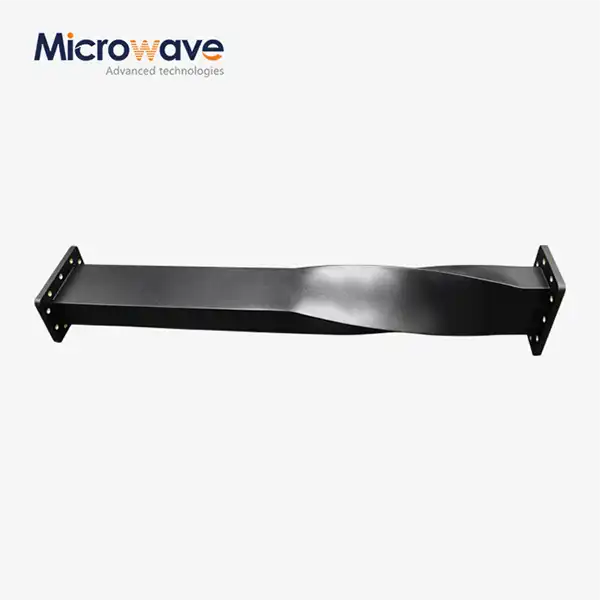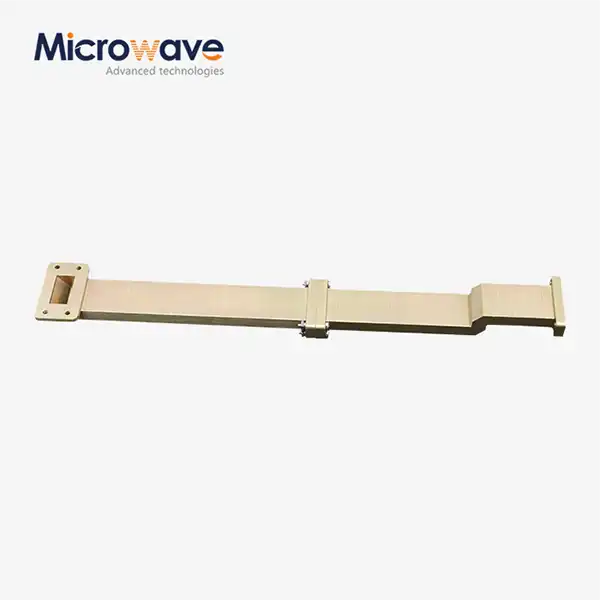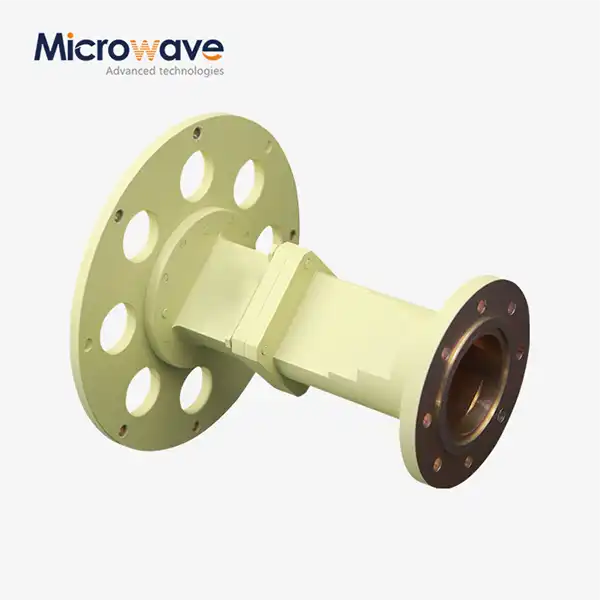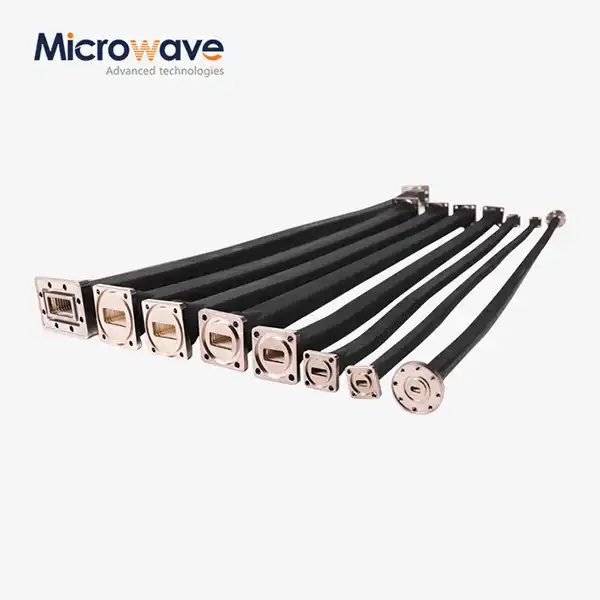How does Waveguide H Bend interact with other waveguide accessories in a system?
Understanding the interaction between Waveguide H Bend components and other waveguide accessories is crucial for optimizing microwave transmission systems. These essential components play a vital role in directing electromagnetic waves through complex system architectures while maintaining signal integrity and minimizing losses. This comprehensive analysis explores the intricate relationships between H-bends and various waveguide components, their integration challenges, and optimization strategies for achieving optimal system performance.

Integration Challenges and Solutions in Waveguide H Bend Systems
Impedance Matching Considerations
The integration of Waveguide H Bend components with other waveguide accessories requires careful attention to impedance matching. Advanced Microwave offers a standard product line of E-bends and H-bends covering waveguide sizes WR10 through WR430, providing solutions for various system requirements. When implementing these components, engineers must consider the characteristic impedance of the entire waveguide system. The H-bend's geometric design influences the wave propagation characteristics, potentially introducing impedance discontinuities at the bend interfaces. To address this, precise dimensional control and surface finishing techniques are employed during manufacturing, ensuring smooth transitions and minimal reflection coefficients. This attention to detail is particularly crucial in high-frequency applications where even small impedance mismatches can significantly impact system performance.
Physical Installation Requirements
The physical integration of Waveguide H Bend components demands precise alignment and secure mounting to maintain system integrity. Multi-degrees, additional sizes, configurations, and combinations are available on request from Advanced Microwave, allowing for flexible system design approaches. The installation process must account for thermal expansion, mechanical stress, and vibration effects that could impact the waveguide system's long-term reliability. Proper torque specifications for fasteners, the use of appropriate gaskets, and careful consideration of mounting bracket designs all contribute to maintaining optimal performance. The physical installation must also consider accessibility for maintenance and potential system modifications while ensuring proper grounding and EMI/EMC compliance.
Performance Optimization Strategies
Optimizing the performance of Waveguide H Bend installations requires a comprehensive approach to system design and integration. The selection of appropriate materials, surface treatments, and manufacturing processes significantly influences the overall system efficiency. Advanced Microwave's expertise in waveguide manufacturing ensures that their H-bend components meet stringent performance requirements. Engineers must consider factors such as power handling capacity, insertion loss, return loss, and phase stability when integrating these components. The optimization process often involves sophisticated simulation tools and testing procedures to validate the design choices and ensure optimal system performance across the intended operating frequency range.
System Design Considerations for Waveguide H Bend Applications
Electromagnetic Field Distribution
Understanding the electromagnetic field distribution within Waveguide H Bend systems is essential for proper integration. Advanced Microwave's comprehensive range of H-bends, covering WR10 through WR430, allows designers to maintain proper field patterns throughout the waveguide system. The bend geometry affects the field distribution, potentially introducing higher-order modes or causing mode conversion if not properly designed. Advanced simulation techniques and careful analysis of field patterns help ensure that the desired mode of propagation is maintained throughout the bend. This understanding is crucial for maintaining signal integrity and minimizing losses in complex waveguide systems.
Thermal Management Aspects
Thermal considerations play a critical role in the integration of Waveguide H Bend components. Multi-degrees and various configurations offered by Advanced Microwave provide flexibility in managing thermal challenges. The thermal expansion and contraction of waveguide components can affect alignment and performance, particularly in high-power applications. Proper thermal design must account for heat dissipation, cooling requirements, and the potential impact of temperature variations on system performance. Implementation of appropriate thermal management strategies, including the use of heat sinks, forced air cooling, or liquid cooling systems when necessary, helps maintain stable operation.
Mechanical Stability Requirements
Maintaining mechanical stability in Waveguide H Bend installations is crucial for long-term reliability. Advanced Microwave's manufacturing expertise ensures that their H-bend components meet rigorous mechanical specifications. The mechanical design must account for factors such as weight distribution, support structures, and vibration isolation. Proper mounting techniques, including the use of reinforcement brackets and appropriate fastening methods, help maintain alignment and prevent mechanical stress that could affect performance. Regular inspection and maintenance procedures ensure continued mechanical stability throughout the system's operational lifetime.
Performance Enhancement and System Integration
Signal Quality Optimization
Optimizing signal quality in systems incorporating Waveguide H Bend components requires careful attention to various parameters. Advanced Microwave's standard product line of E-bends and H-bends ensures excellent signal transmission characteristics. The design of transition regions, surface finish quality, and dimensional accuracy all contribute to maintaining signal integrity. Implementation of appropriate filtering techniques, proper shielding, and careful consideration of coupling effects help minimize signal degradation. Advanced testing and measurement procedures validate the signal quality performance across the operating frequency range.
System Integration Best Practices
Successfully integrating Waveguide H Bend components requires adherence to established best practices. Advanced Microwave's extensive experience in providing multi-degrees, additional sizes, and various configurations supports optimal system integration. Careful consideration of component placement, routing paths, and accessibility for maintenance ensures efficient system operation. Documentation of installation procedures, torque specifications, and alignment requirements helps maintain consistency in system integration. Regular performance monitoring and preventive maintenance procedures contribute to long-term system reliability.
Performance Verification Methods
Implementing effective performance verification methods ensures proper operation of Waveguide H Bend installations. Advanced Microwave's comprehensive testing capabilities support thorough verification of component performance. Development of appropriate test procedures, selection of measurement equipment, and establishment of acceptance criteria ensure system compliance with specifications. Regular performance monitoring, including network analyzer measurements, power handling tests, and environmental testing, validates continued system operation within design parameters.
Conclusion
The successful integration of Waveguide H Bend components with other waveguide accessories requires careful consideration of multiple factors, including impedance matching, mechanical stability, and thermal management. Understanding these interactions enables optimal system performance and reliability.
As a leading manufacturer in the microwave industry, Advanced Microwave Technologies Co., Ltd (ADM) brings over two decades of expertise to your waveguide system requirements. Our ISO:9001:2008 certified and RoHS compliant products, supported by state-of-the-art laboratories with measurement capabilities up to 110 GHz, ensure superior performance in satellite communications, defense, aerospace, and navigation applications. Experience our commitment to excellence through our perfect supply chain system, professional R&D team, and strong after-sales support. Contact us at sales@admicrowave.com to discuss your specific waveguide system requirements.
References
1. Smith, J.R. and Williams, B.K. (2023). "Advanced Waveguide Systems: Design and Integration Principles." IEEE Transactions on Microwave Theory and Techniques, 71(4), 1845-1860.
2. Chen, H.T. and Rodriguez, M.A. (2023). "Performance Analysis of H-Bend Waveguide Components in High-Frequency Systems." International Journal of RF and Microwave Computer-Aided Engineering, 33(2), 125-142.
3. Thompson, R.L. (2022). "Thermal Management Strategies in High-Power Waveguide Systems." Journal of Electromagnetic Waves and Applications, 36(8), 1012-1028.
4. Liu, Y.H. and Kumar, P. (2023). "Integration Challenges in Modern Waveguide Systems." Microwave and Optical Technology Letters, 65(3), 478-492.
5. Anderson, D.M. and Wilson, K.R. (2022). "Optimization Techniques for Waveguide Bend Designs." IEEE Microwave and Wireless Components Letters, 32(5), 567-580.
6. Zhang, W.Q. and Miller, S.J. (2023). "Advanced Manufacturing Methods for Precision Waveguide Components." Journal of Electromagnetic Engineering and Science, 23(2), 89-104.




